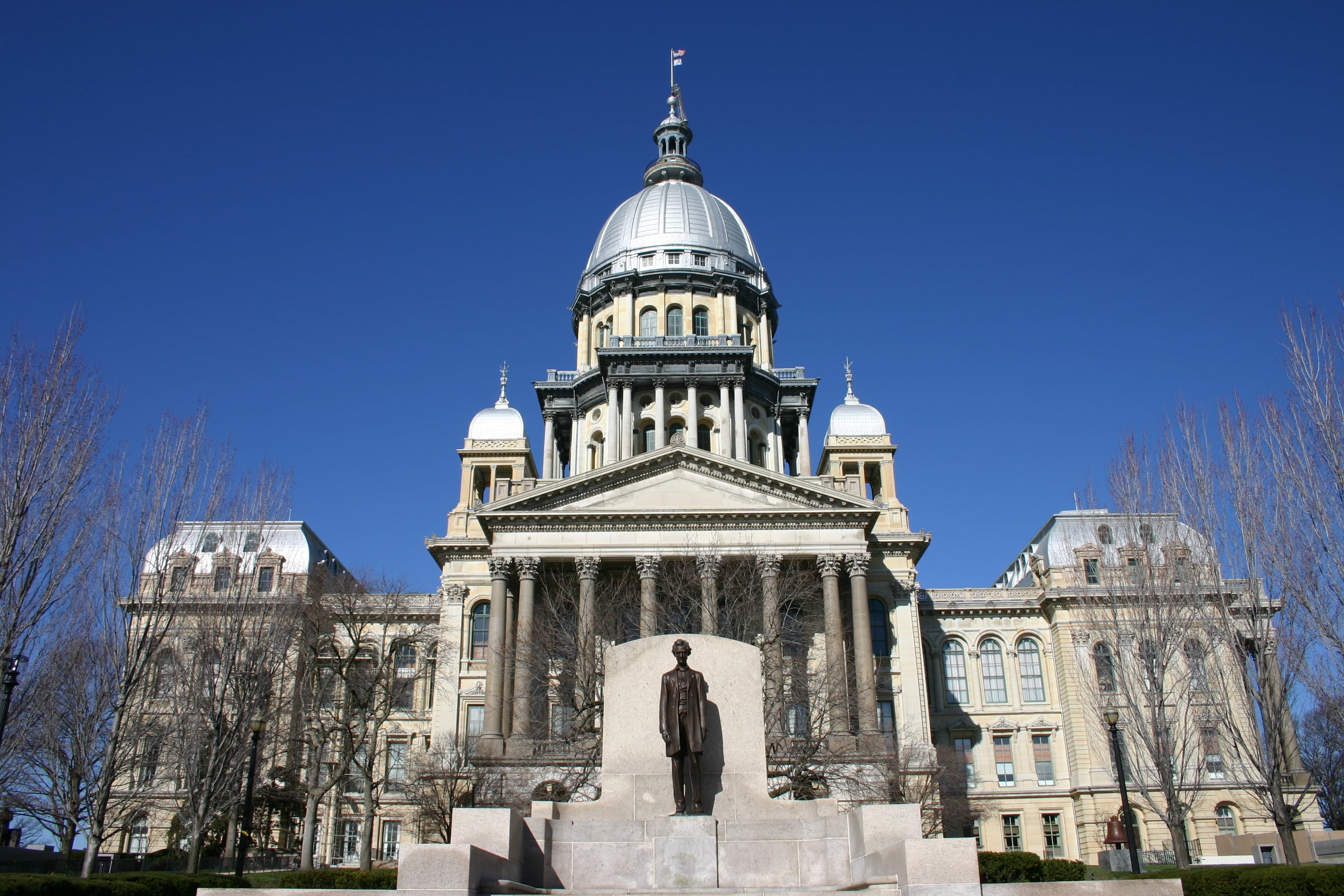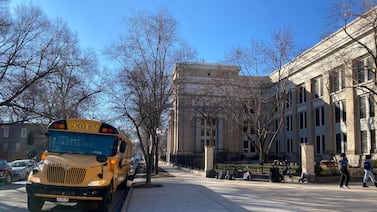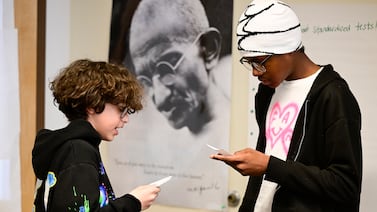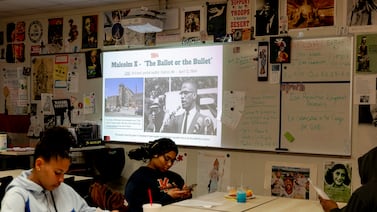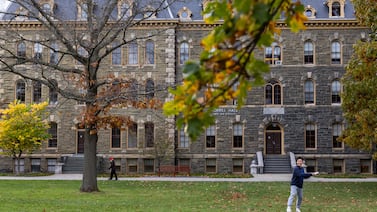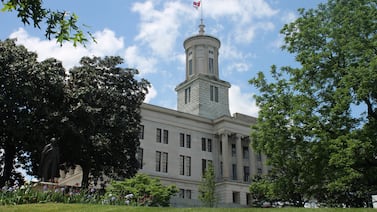Sign up for Chalkbeat Chicago’s free daily newsletter to keep up with the latest education news.
Chicago voters would elect – for the first time – 10 school board members this November and all 21 members in 2026, according to a plan approved by Illinois senators Tuesday.
The vote on Senate Bill 15 firms up the districts that elected school board members would represent ahead of a looming April 1 deadline to draw a map lawmakers pushed back last spring. It also comes ahead of March 26, when candidates can begin circulating petitions to get on the Nov. 5 ballot. They would need to collect at least 1,000 but not more than 3,000 signatures by June 24 in order to run.
The bill now goes to the House, which must approve the measure before it can head to Gov. J.B. Pritzker’s desk.
The Senate vote appears to resolve a disagreement between lawmakers that emerged last year over whether Chicago should go straight to electing all 21 school board members and skip having a hybrid school board. The original law passed in 2021 laid out a process to have 10 elected members and 11 appointed by the mayor.
Senate President Don Harmon said during the hearing that he filed an amendment to the bill that passed Tuesday because Mayor Brandon Johnson wrote a letter to him at the end of January requesting to stick with a hybrid school board.
“There has been much passion and frustration surrounding this effort, not for days or weeks or months, but for years and decades,” said Harmon during the Senate’s floor debate on Tuesday afternoon. “What we’re about to do today is one of the most consequential things we will do in our legislative careers. We are making a new democratic form of government from whole cloth and getting it across the finish line.”
Chicago’s Board of Education has been appointed by the mayor since 1995, when the state legislature gave control of Chicago Public Schools to then-Mayor Richard M. Daley. In 2021, the state legislature passed a law paving the way for a 21-member elected school board. The school board votes on the district’s annual multi-billion dollar budget, determines how schools are measured, authorizes contracts with vendors to bus students to and from school, clean classrooms and hallways, and even operate entire schools under charter agreements.
Senate majority leader Kimberly Lightford, who represents parts of Chicago’s West Side and western suburbs, said it is time to stop “playing politics” and represent the children who are attending Chicago Public Schools.
“We are here now, punting the ball back and forth from chamber to chamber – if the mayor wants it, if [Chicago Teachers Union] wants it — who cares?” Lightford said. “When are we willing to put politics aside and educate our children? I would love to see that happen before I retire.”
The district map approved by the Senate on Tuesday mirrors a third draft released during the veto session in November, but groups the 20 districts into pairs to create 10 districts for this year’s elections. That aligns with what the House passed last fall which was put forward by Rep. Ann Williams, who represents parts of the city’s North Side and chairs a special task force of House Democrats who worked on drawing school board districts.
There are three majority Black districts, three majority Latino districts, two majority white districts, and two districts with no majority, but a white plurality.
By creating 10 districts for 2024 and dividing them into 20 subdistricts in 2026, Senate Bill 15 would allow everyone in the city to vote for a school board member this November.
During the 2024 elections, if the winning candidate in District 1 lives in subdistrict 1a, the mayor would appoint someone who lives in 1b. In 2026, all 20 school board members would be elected from subdistricts to either a two-year or four-year term and the school board president would be elected citywide to a four-year term beginning Jan. 15, 2027.
Chicagoans who testified at multiple hearings last year raised concerns about the school board representing the students it will eventually serve. The district is 46% Latino, 36% Black, 11% white, and 4% Asian American. However, electoral districts must represent all voters. Chicago’s overall population is 33% white, 29% Latino, and 29% Black.
A Chalkbeat analysis of the demographics of the schools within the boundaries of each of the 10 districts indicates that in four districts, the racial majority of the population does not match the student demographics of the schools in that district.
There is also an imbalance of the number of CPS schools within each district. One district, which stretches from West Town to Austin, has 101 public schools in it, while the north lakefront district that includes Lakeview, Lincoln Park, and Uptown, has 34 CPS schools.
Kids First Chicago, a parent advocacy group, said in a statement it hopes Mayor Johnson will “leverage his appointments to ensure the elected school board reflects our student body’s diversity in 2025.”
Under the bill now headed to the House, the 10 districts would be divided for the 2026 elections, creating 20 districts, seven majority Black, six majority Latino, and five where the population is 50% or more white. Two districts are plurality white, with Latinos making up the second-largest population.
During the Senate’s executive committee hearing earlier on Tuesday, a large number of people were critical of Senate Bill 15. Some want to see a fully elected school board now, while others found the language in the bill confusing.
“Back in November, everybody could vote for the candidate of their choice. Anybody who wanted to run could run and it didn’t matter where they lived or who their neighbor was,” said Valerie Leonard, with Illinois African Americans for Equitable Redistricting, which also pushed for a committee that focuses on Black student achievement at Chicago Public Schools.
Leonard said the move to an elected school board under this plan is confusing. “If you ask 30 people what this bill is today, I guarantee you’re gonna get 30 different answers,” Leonard said. “That’s not good public policy.”
Sen. Robert Martwick, who sponsored the elected school board law that passed in 2021, said on the Senate floor Wednesday that bill also required compromise.
“That’s what the Senate passed. That’s what the House passed. That’s what the governor signed,” said Martwick. “Is it perfect? No. But when you figure out what the perfect form of democracy is, would you let me know?”
Martwick worked with some grassroots organizers and the CTU for several years to make an elected school board a reality in Chicago.
“People volunteered and worked for years and years before I got there,” he said. “We get the privilege of making their dreams of democracy become a reality.”
Becky Vevea is the bureau chief for Chalkbeat Chicago. Contact Becky at bvevea@chalkbeat.org.
Samantha Smylie is the state education reporter for Chalkbeat Chicago, covering school districts across the state, legislation, special education, and the state board of education. Contact Samantha at ssmylie@chalkbeat.org.


